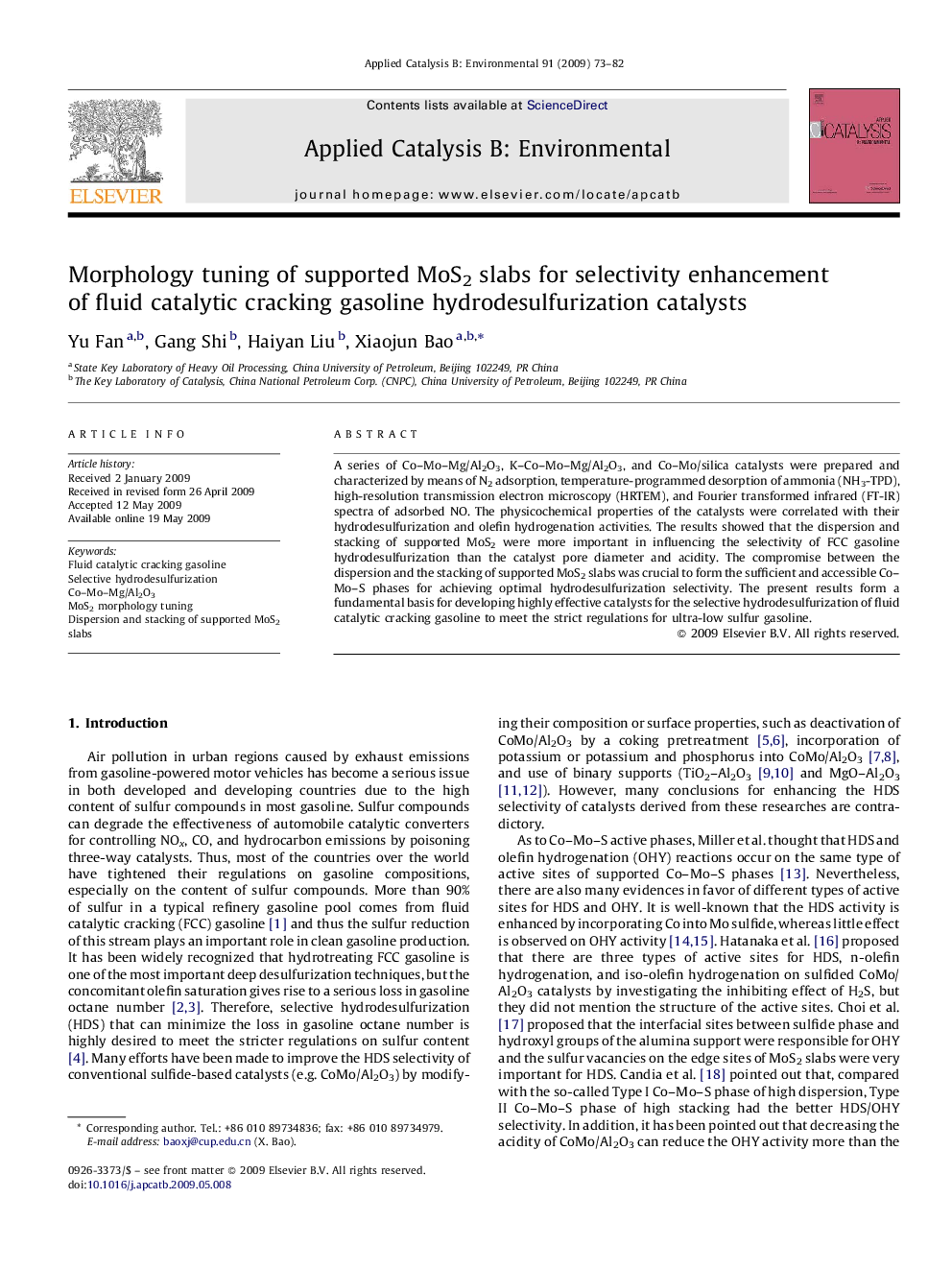| Article ID | Journal | Published Year | Pages | File Type |
|---|---|---|---|---|
| 47712 | Applied Catalysis B: Environmental | 2009 | 10 Pages |
A series of Co–Mo–Mg/Al2O3, K–Co–Mo–Mg/Al2O3, and Co–Mo/silica catalysts were prepared and characterized by means of N2 adsorption, temperature-programmed desorption of ammonia (NH3-TPD), high-resolution transmission electron microscopy (HRTEM), and Fourier transformed infrared (FT-IR) spectra of adsorbed NO. The physicochemical properties of the catalysts were correlated with their hydrodesulfurization and olefin hydrogenation activities. The results showed that the dispersion and stacking of supported MoS2 were more important in influencing the selectivity of FCC gasoline hydrodesulfurization than the catalyst pore diameter and acidity. The compromise between the dispersion and the stacking of supported MoS2 slabs was crucial to form the sufficient and accessible Co–Mo–S phases for achieving optimal hydrodesulfurization selectivity. The present results form a fundamental basis for developing highly effective catalysts for the selective hydrodesulfurization of fluid catalytic cracking gasoline to meet the strict regulations for ultra-low sulfur gasoline.
